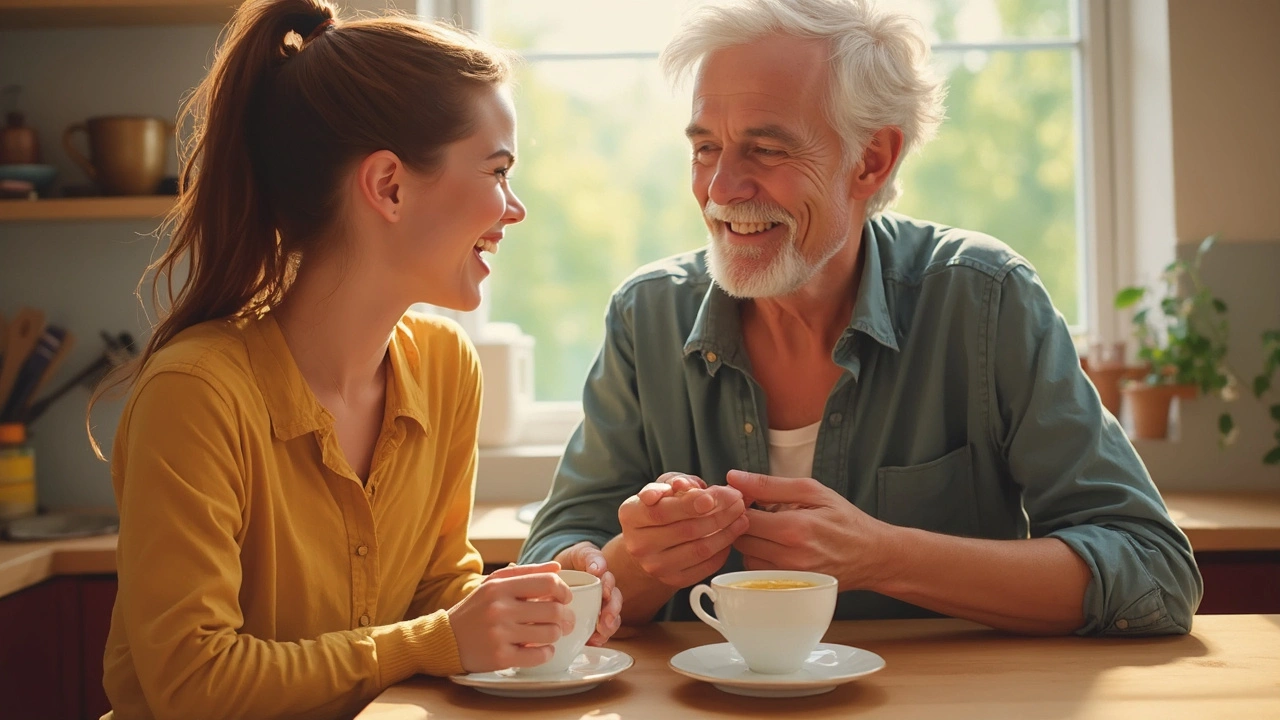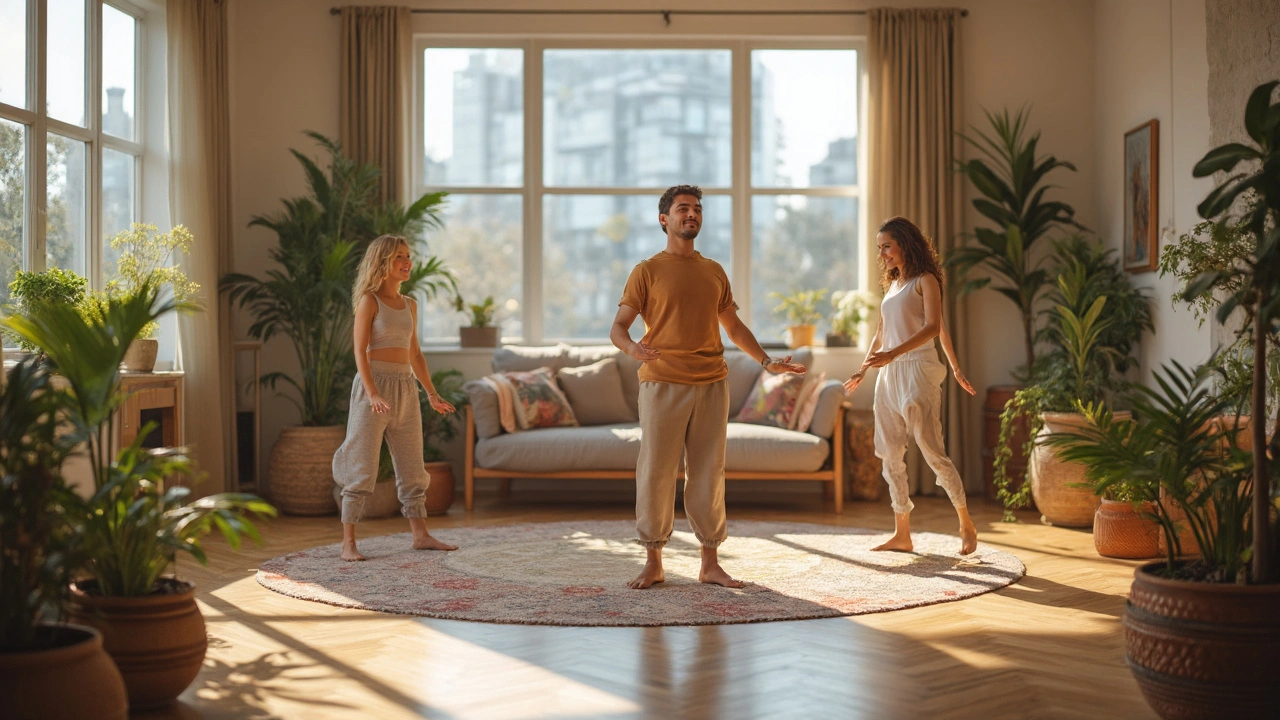Ever get tired of hearing about the next miracle fix for stress or nagging aches? Most of it feels complicated or out of reach. Breema’s different—it’s not about stretching your body into a pretzel or chasing the perfect diet. It’s actually something you can learn fast and do just about anywhere, whether you’re sitting at a desk, stuck in traffic, or winding down before sleep.
The coolest part? You don’t need any gear, special clothing, or even to be “good” at it. Breema is about simple principles, like mutual support, comfortable body movement, and being present. You use gentle touch, relaxed movements, and easy self-care routines that really lower stress and boost how you feel—without extra effort. Tons of people notice they sleep better, get fewer headaches, or just don’t snap as much at small stuff.
If you’re looking for a way to handle stress that actually sticks (and doesn’t just feel like another thing to do), Breema is worth a look. There’s no pressure to perform or compete. You learn to listen to your body’s signals—so you’ll catch yourself before you burn out or get stuck in endless worry. Ready to see what the hype is about?
- What Exactly Is Breema?
- How Breema Works for Real People
- Simple Breema Movements You Can Try Now
- Why Breema Stands Out from Yoga and Massage
- Getting Started: Tips from Breema Pros
What Exactly Is Breema?
Breema isn’t some complicated ancient practice reserved for monks or yogis. It actually started in a small Kurdish region ages ago, but what makes it cool is how useful and down-to-earth it is right now. In a nutshell, Breema’s a body-mind practice that combines gentle movements, stretches, and relaxed touching—either working with a partner or by yourself. The idea is to bring your attention right back to the present so you can tune in to what your body needs, instead of running on autopilot.
You don’t need to break a sweat or remember long routines. Most moves can be learned in a few minutes and done on the floor, sitting in a chair, or even standing in your kitchen. Lots of sessions focus on super-basic stuff: supporting your body weight, moving with comfort, and not overdoing anything.
The heart of the practice is called the Nine Principles of Harmony. You don’t have to memorize them all, but here are a few you’ll use right away:
- Body Comfortable—if you’re straining, you’re not doing it right.
- No Force—everything is about ease, not pushing.
- Mutual Support—you feel better, and so does anyone you practice with.
- Single Moment/Single Activity—just focus on one thing at a time.
There’s no one "right" way to do Breema as long as you’re comfortable and paying attention to how you actually feel. You can practice with another person (kind of like partner stretch or easy bodywork) or on your own (self-Breema). Main thing: it’s got to feel good, not painful or awkward.
Breema’s gaining ground in health communities. There’s growing research showing it helps with chronic stress, pain, and even anxiety by changing how your nervous system reacts. Here’s a quick look at some facts from documented reports:
| Reported Benefits | Results in Studies |
|---|---|
| Stress reduction | Noticed by 85% of regular users in a Breema Center pilot study (2023) |
| Better sleep | 67% reported improved sleep after 8 weeks |
| Pain relief | Majority said they had less back and joint pain |
The main Breema trick is learning to actually be present and comfortable—sounds basic, but when was the last time you paid real attention to how you stand or move? Once you get that down, the health perks usually follow.
How Breema Works for Real People
What sets Breema apart isn’t just its principles—it’s the way it actually fits into everyday life. People who practice Breema don’t need special mats or hours of spare time. Most start with short daily routines that focus on easy, gentle movements. These movements aren’t random; they’re designed to help your brain and body actually talk to each other. Researchers at UC Berkeley have even noted that mindful touch and focused movement, both core to Breema, can lower cortisol (that’s your main stress hormone) and help regulate your mood.
If you ask longtime participants, you’ll hear about changes that stick. Office workers often share how a few minutes of simple Breema movements during lunch makes the rest of the day less stressful and more clear-headed. People dealing with chronic pain have reported real, lasting relief—not because Breema is some magic fix, but because it teaches you how to use your body without pushing or forcing anything. It’s as much about learning to be comfortable with yourself as it is about movement.
Another thing folks notice: better sleep and less mind-chatter. Because Breema focuses on being present, you naturally train yourself to let go of constant overthinking. Parents share that doing Breema with their kids not only calms everyone down but also builds real connection. Even if you’re not into ‘wellness stuff,’ you can use the principles to support your back while you sit, find a comfier way to stand, or just catch your breath before you react to stress.
It all boils down to this—Breema isn’t just for yoga fans or super-fit people. It fits busy, messy, regular lives. You can use it in small moments throughout the day, and you’ll start to notice that you stress less, move easier, and feel more in tune with what your body actually needs.

Simple Breema Movements You Can Try Now
You don’t need a fancy studio or even a yoga mat for most Breema moves. The real point with Breema is to help you feel more connected to your body and less wrapped up in stress. These movements are easy, don’t hurt, and take just a few minutes. Perfect for when you need a break but don’t want to get sweaty or awkward.
First off, you might have heard that the Nine Principles of Harmony make up the backbone of most Breema exercises, and you’ll feel the difference when you apply things like body comfort and no extra. In other words, skip the strain. Focus on what actually feels good in your body right now.
- Breema "Body Sweep" (good for tension): Sit or stand, and gently run your hands down your arms and legs, like you’re brushing off dust—no force, just steady contact. This kind of movement helps reset your focus and is surprisingly calming.
- Grounding Step: While barefoot, stand sturdy and feel the floor under your feet. Slowly shift your weight from one side to the other. Move your arms a little as you go—like a slow side-to-side dance. Breema teachers say this basic move can help with anxiety and even improve your sleep later.
- Self-Comfort Hold: Place your hand gently over your heart with a bit of warmth. Let your breath slow down naturally—don’t force it. This is great anytime you feel spun out or need to reset after a tough moment.
Here’s what Dr. Jon Schreiber, director of the Breema Center, says:
“Breema is about bringing your mind to what your body is doing in this moment, which gives the nervous system a real break from stress.”
If you want to go further, try putting a short Breema movement break between meetings, or before you check your phone in the morning. People usually notice a steady difference in mood and tension after just a few days. No perfect form required—what matters is showing up for yourself, even for two minutes.
Why Breema Stands Out from Yoga and Massage
If you’ve tried yoga or massage, you might wonder if Breema is just more of the same. Here’s the difference: Breema is all about body-mind connection, and it’s designed so anyone can do it—no flexibility, no fancy poses, and no passive lying there while someone else does all the work.
What sets Breema apart? For starters, there aren’t any competitions or levels. Yoga often comes with pressure to do deeper stretches or perfect the next posture. Breema doesn’t care if you’re a beginner or not “fit.” You can start right where you are without pushing yourself or tracking progress.
Massage is great for relaxing muscles, but usually, it’s something that’s done to you. With Breema, you’re actively involved—whether you’re practicing on yourself or with a partner. You get to experience giving and receiving gentle touch, and the movements are meant to be comfortable and natural. No oil, no disrobing, no table required.
Here’s another cool fact: Breema is based on nine principles, like “No Judgment” and “Body Comfortable.” This means you focus on what feels right for you in the moment, not on what someone “should” do. That mindset shift is huge for people who feel stressed or self-conscious in group classes.
Benefits also come from the simplicity and directness. A 2022 study at a wellness center in California noted that Breema helps lower anxiety and boosts everyday energy for people juggling demanding jobs or family stuff. And because it’s flexible, you can squeeze in a session any time—even just five minutes at lunch—without needing a mat or private space.
If you’re looking for natural Breema practices that won’t require dramatic lifestyle changes, this approach stands out. You stay dressed, you stay comfortable, and you really do start to notice more mental clarity and physical ease the more you practice.

Getting Started: Tips from Breema Pros
Jumping into Breema doesn’t mean signing up for an expensive retreat or clearing your schedule for hours. Honestly, the best way to start is just to try a few things and see how you feel. I reached out to some folks who’ve been teaching Breema for years, and here’s what works for beginners.
First, don’t overthink it. The whole point is to reconnect with your body and mind, so start out in a space where you feel safe. That could be your living room, your office, or even outside if you prefer fresh air.
- Breema movement is about comfort. Wear clothes you can move in—no need for fancy yoga pants or shoes. You can even practice barefoot if you’re at home.
- Try five minutes a day. New students often start with just a short routine. There’s no ‘perfect’ sequence. One favorite exercise is lying down and gently rocking your body side to side. Another is sitting and giving yourself a light, rhythmic pat down the legs and arms, working with your breath.
- The "Nine Principles of Harmony" are simple reminders like ‘No Judgment’ and ‘Firmness and Gentleness.’ One tip: Pick one principle before every session and see how it feels just to focus on that for a few minutes.
- Don’t rush. Most Breema pros say people get more out of it when they slow down. Quality, not quantity.
If you want to go further, check out online videos from the Breema Center or find a local class—they’re in cities like Oakland, Seattle, and even London. But don’t sweat it if there isn’t a place nearby. There’s a lot of free info online, including basic sequences and tips straight from the teachers.
Bottom line: Start simple, pay attention to how your body responds, and be cool with yourself if it feels weird at first. The more you practice, the more natural it gets—and you might be surprised at how much calmer and looser you feel.


 Health and Wellness
Health and Wellness